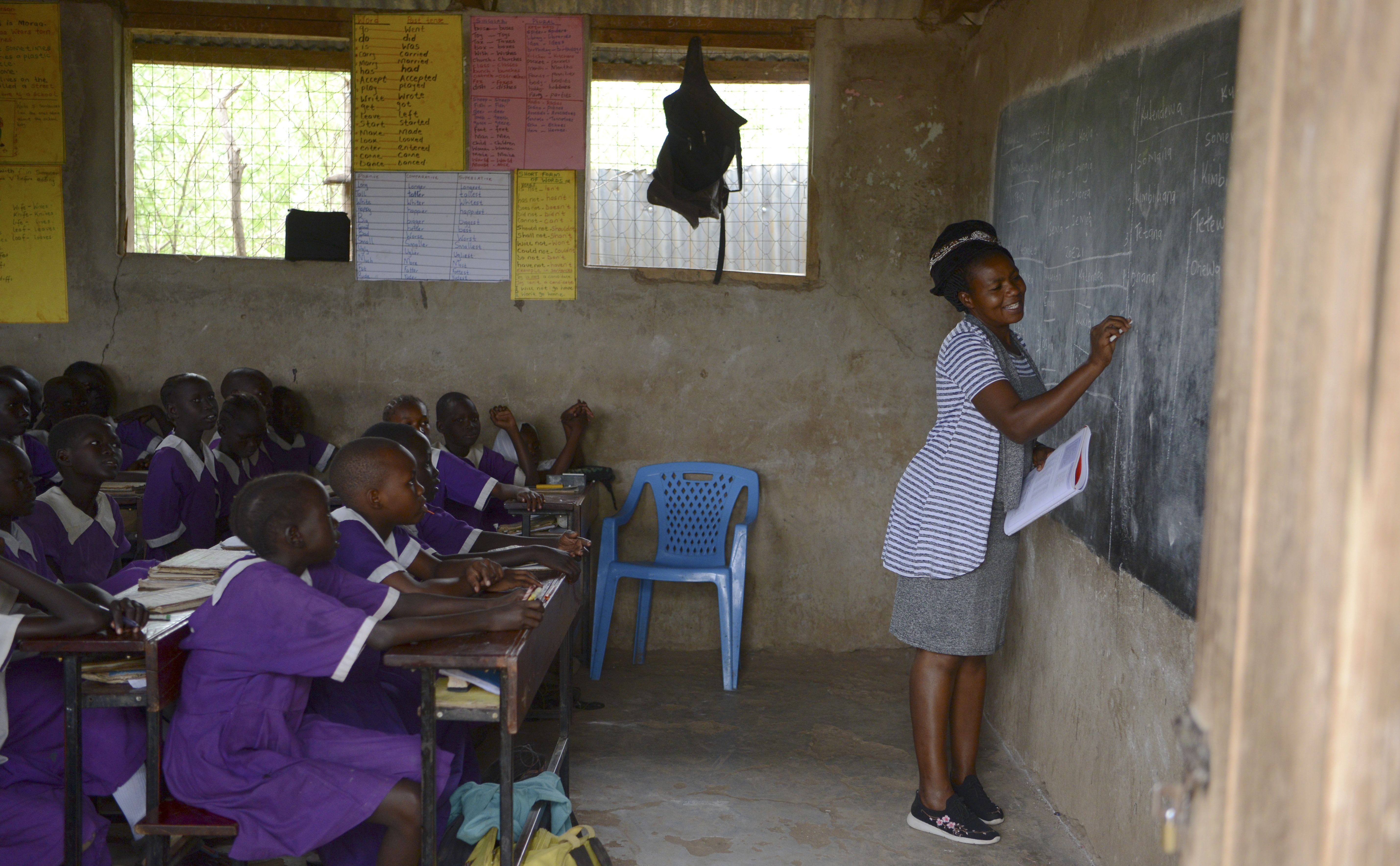Introduction:
Today you will read and discuss the cover story from TIME for Kids (TFK) Vol. 8 No 22, "Education for All."

Kids at Kakuma refugee camp walk home from school. Image by Jaime Joyce. Kenya, 2018.
1. Analyze the photo above.
- What do you see?
- What do you think about what you see?
- What do you wonder?
2. Focus on the title.
- What do you think "Education for All" means?
- Based on the image and title, what do you think the story will be about?
3. For this story, TFK editor Jaime Joyce traveled to Kenya to learn what it's like for refugee children living in Kakuma refugee camp. In her cover story, Joyce reports on her experience.
4. This article is an example of literary journalism, or narrative nonfiction. In contrast to traditional journalism, this type of nonfiction writing includes literary elements and techniques (character, setting, sensory details, etc.). In addition, literary journalism is often written in the first person, so the author is the narrator.
Read the Text:
1. Joyce has recorded read-aloud versions of the story. Go to timeforkids.com and follow along while she reads "Kids of Kakuma."
2. While you listen, take note of the elements and techniques of literary journalism (sensory details, first-person point of view, etc.). Mark up the text or use sticky notes to jot down what you notice.
Respond to the Text:
Journalists research, collect, and write about news. Literary journalism is a type of nonfiction where the writer combines reporting and narrative techniques, thereby personalizing the story. Sometime this style of writing is referred to as creative nonfiction. "Kids of Kakuma" models creative nonfiction writing. As a class, discuss:
- How is the structure of "Kids of Kakuma" different from other nonfiction you have read? To compare look at other news stories from TIME for Kids.
- The author tells a story in this style of writing. What is the author's story?
- The author includes many details to help you feel like you are there with her. What sensory elements does the author include?
- An important element in literary journalism is the reporting. What facts does the author include about the topic?
- What is the central idea of "Kids of Kakuma"?
- Why do you think the author wrote the article as a piece of literary journalism?
- Why did she write it in first person?
- How does the article's structure contribute to the story's meaning?
- What does the author want you to know?
- What is at the heart of this story?
- What ideas are relevant to life, beyond the story?
Extension Ideas:
1. Use Google Earth to see where Joyce reported from in Kenya. Click the search tool on the left side of the screen and type "Kakuma, Kenya." Zoom in on the map to view images from the region.
2. After you read the "How Can You Help" section, come up with ideas for how you can raise money to purchase school supplies for refugee children around the world.
This lesson is from the TIME for Kids Edition 5-6 Teacher's Guide Vol. 8 No. 22.
Questions 11 and 12 in the "Respond to the Text" section are designed to push the discussion further. The goal is to get students thinking about the topic of education as a whole and making connections to education within refugee camps and beyond them, on a global scale. For example, students may have heard of the Syrian refugee crisis and have questions about how it impacts children and their education.
Assessment: Click here for a printable quiz. Teacher subscribers can find the answer key in this week's TIME for Kids Teacher's Guide.
Common Core Standards:
RI. 5.1, 5.7; 6.1, 6.7
SL. 5.1, 5.3; 6.1, 6.3
